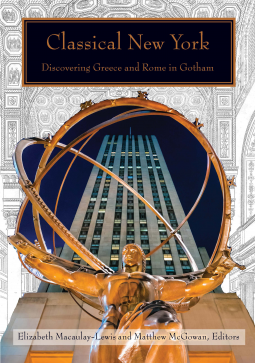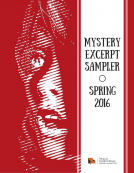
Classical New York
Discovering Greece and Rome in Gotham
by
This title was previously available on NetGalley and is now archived.
Send NetGalley books directly to your Kindle or Kindle app
1
To read on a Kindle or Kindle app, please add kindle@netgalley.com as an approved email address to receive files in your Amazon account. Click here for step-by-step instructions.
2
Also find your Kindle email address within your Amazon account, and enter it here.
Pub Date Sep 04 2018 | Archive Date Aug 31 2018
Fordham University Press | Empire State Editions
Talking about this book? Use #ClassicalNewYork #NetGalley. More hashtag tips!
Description
During the rise of New York from the capital of an upstart nation to a global metropolis, the visual language of Greek and Roman antiquity played a formative role in the development of the city’s art and architecture. This compilation of essays offers a survey of diverse reinterpretations of classical forms in some of New York’s most iconic buildings, public monuments, and civic spaces.
Classical New York examines the influence of Greco-Roman thought and design from the Greek Revival of the late eighteenth and early nineteenth centuries through the late-nineteenth-century American Renaissance and Beaux Arts period and into the twentieth century’s Art Deco. At every juncture, New Yorkers looked to the classical past for knowledge and inspiration in seeking out new ways to cultivate a civic identity, to design their buildings and monuments, and to structure their public and private spaces.
Specialists from a range of disciplines—archaeology, architectural history, art history, classics, and history— focus on how classical art and architecture are repurposed to help shape many of New York City’s most evocative buildings and works of art. Federal Hall evoked the Parthenon as an architectural and democratic model; the Pantheon served as a model for the creation of Libraries at New York University and Columbia University; Pennsylvania Station derived its form from the Baths of Caracalla; and Atlas and Prometheus of Rockefeller Center recast ancient myths in a new light during the Great Depression.
Designed to add breadth and depth to the exchange of ideas about the place and meaning of ancient Greece and Rome in our experience of New York City today, this examination of post-Revolutionary art, politics, and philosophy enriches the conversation about how we shape space—be it civic, religious, academic, theatrical, or domestic—and how we make use of that space and the objects in it.
Available Editions
| EDITION | Other Format |
| ISBN | 9780823281022 |
| PRICE | $88.00 (USD) |
| PAGES | 320 |
Links
Average rating from 3 members
Featured Reviews
CLASSICAL NEW YORK: DISCOVERING GREECE AND ROME IN GOTHAM describes the influence of classical art and architecture on New York’s most famous buildings and works of art. Written by a range of experts in architectural history, archaeology, the classics, art history, and history, CLASSICAL NEW YORK demonstrates these similarities in such buildings as Federal Hall, reflective of the Parthenon; the Libraries at New York and Columbia universities suggestive of the Pantheon; the Baths of Caracalla impacting the form of Pennsylvania Station; and Rockefeller Center itself an imaging of Prometheus and Atlas. Offers an imaginative education in multiple disciplines as it reveals the roots of a great modern city. Highly recommended!
Pub Date 04 Sep 2018
Thanks to Fordham University Press and NetGalley for the ARC. Opinions are fully mine.
#ClassicalNewYork #NetGalley


















